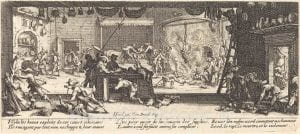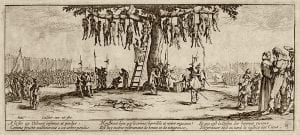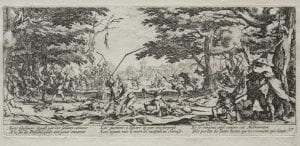“On his way up from the Piraeus outside the north wall, he noticed the bodies of some criminals lying on the ground, with the executioner standing by them. He wanted to go and look at them, but at the same time he was disgusted and tried to turn away. He struggled for some time and covered his eyes, but at last the desire was too much for him. Opening his eyes wide, he ran up to the bodies and cried, “There you are, curse you, feast yourselves on this lovely sight.”
–leontius, Plato’s The republic
The allure of horror is a feeling which emboldens itself with the most complex emotions, unable to be succinctly boxed into easy understanding. Like Leontius, I have on many occasions cursed myself for viewing the unviewable, unable to turn away for a second. Most recently so during a screening of Takeshi Miike’s Audition, a film which is punishingly brutal in its depictions of suffering and mutilation. Watching the film I uselessly covered my eyes, peering through my fingers unable to look away for a second, not even pausing to take a breath. It was exhilarating, horrific, fantastical. It was an experience that left me clear-headed and nearly giddy with shock and adrenaline, even an hour after I had left the theater. I could almost describe it as beautiful, and yet how could any person describe such a horrific production as beautiful? Can the horrific even be beautiful, and if so, can I reconcile that beauty with the reality of suffering? Can anyone? Such a complex question has no easy answers, and yet I think we can turn to Susan Sontag’s collection of essays Regarding the Pain of Others and Jaques Callot’s series of etchings “The Miseries of War” in order to achieve a better understanding.

The Plundering of a Farm- Jacques Callot
Callot’s work, The Miseries of War, depicts exactly what its title suggests: The Miseries of War. And what a lot of absolute total misery is contained within these 18 prints! Callot pulls few punches, instead assaulting the eyes with violent scenes of rape, torture, and murder. Despite being inspired by the internal conflicts and wars waged by the French aristocrats of the time, in The Miseries of War there are no delineated sides, only absolute and utter pain and suffering. The Plundering of the Farm is a perfect introduction to this side of the series, as a work which holds only the most absolute of miseries. Innocent peasants fleeing violation, men being spit roasted like swine, and many corpses littering the ground. Yet I have had the… pleasure… of seeing this piece in person and it is one that even in its small size commands attention, beckons one to study it. It’s a painstakingly beautiful work, in its artistry and also its allure. The way Callot pieces together intimate details to create a picture of perfect chaos, the excellent shadow work which serves to lend an alien sense to the piece as a whole stands in contrast to the very human figures depicted. It’s horrific. To gaze into its essence is to be unable to look away even as your brain may tell you otherwise. As Sontag said about such depictions of war, “the account of war’s cruelties is fashioned as an assault on the sensibility of the viewer. The expressive phrases in script below each image comment on the provocation. While the image, like every image, is an invitation to look, the caption, more often than not, insists on the difficulty of doing just that. A voice, presumably the artist’s, badgers the viewer: can you bear to look at this?” (Sontag 37). In light of Sontag’s essay, the picture serves as a challenge and a repudiation of those who look upon it. Furthermore, it enlightens a major difference between viewing depictions of suffering and that suffering itself– which is whenever suffering alone is viewed there is no intention or obligation for it to be seen, but with works like The Plundering of the Farm there is a very explicit intention with its creation: it was made to be seen.

The Breaking Wheel- Jacques Callot
Similar to The Plundering of The Farm, The Breaking Wheel is a work which commands morbid fascination and thus the question of its allure remains. In Regarding the Pain of Others, Sontag discusses philosopher Georges Baitalle who seems to have an answer to how the horrific can be beautiful. “To contemplate this image, according to Bataille, is both a mortification of the feelings and a liberation of tabooed erotic knowledge” (Sontag 77). In this sense, the allure of suffering is perhaps not that it is beautiful but that it is erotic, in that while not overtly sexual in nature the rush and excitement of participating in the taboo encourages your continued viewing. When I watch Audition I feel exhilarated because I am seeing something that I shouldn’t, I cannot look away because to do so would be to restrict myself. When Leontius views the dead body, cursing himself is not an act of inner torment or contrition but an egging on. Curse my own eyes, because to see suffering is to be cursed with knowledge. To be cursed is to be liberated. To view the horrific with a perverse attraction is exploitative and almost dehumanizing in many ways, but it makes sense. Horror can be misperceived as beautiful because of our attraction to such feelings: this is the erotic nature of horror. Similarly, Sontag later says in sort of agreement with Baitalle that “as objects of contemplation, images of the atrocious can answer to several different needs. To steel oneself against weakness. To make oneself more numb. To acknowledge the existence of the incorrigible” (Sontag 77). This way of viewing is at the heart of many reactions to the horrific, mine included. But I am left to wonder, is this truly the case for all works of the horrific?

The Hanging Tree- Jacques Callot
Here, it is appropriate to return to the work of Jacques Callot. I don’t find any perverse pleasure in seeing the suffering of such innocent people, and this isn’t the only such work. I’ve seen/read my fair share of horrific works that are not necessarily shocking or surprising and yet leave me feeling hopeless, destitute, practically broken and yet unable to look away. The “Miseries of War” functions in a way that is different from something like Audition. While perhaps at first there may be an erotic fixation to the work, it quickly becomes something more. Once the shock wears off there is almost an obligation to continue looking, in honor of the people who suffered and for Callot who watched his home country suffer for the wars of the wealthy. There should be a distinction made, I think, between horrific works that seek to shock and those which act with deeper purpose. It’s not that one type is superior to another per se, but rather the classification and understanding of the works should be seen differently. There are horrific photos which seek to profit off of the shock of others but there are others which expose those horrors. To implicate the viewer and all others around them Callot’s works seek to expose and obligate gazing with a purpose. Onlookers are made to more clearly think about and question the violence that we are viewing, and perhaps even encourage change to take place. Perhaps we cannot look away from such works because to do so would be an insult to the suffering that went into them. (As an aside, perhaps this is also why we feel so betrayed when photos claim to be authentic and real but turn out to be manufactured– when you enter into an agreement with a work you choose to trust its authenticity and allow yourself to be obligated by it; so, when it betrays that trust, it is similarly betraying and calling into question that original agreement and your original understanding of the intention. When one feels as though a work they thought was provoking them to contemplation was actually to shock, they not only feel betrayed but also guilty that they fell prey and participated.) Ultimately it is important when viewing images of suffering to interrogate why you feel attracted to such works. The beauty in horror can be borne from eroticism or from noble obligation, and it is the viewer’s job not to ask “can I bear to look at this?” but rather “why should I bear to look at this?”

The Peasant Revenge- Jacques Callot
This design is incredible! You definitely know how to keep a reader
entertained. Between your wit and your videos, I was almost moved to start my own blog (well,
almost…HaHa!) Excellent job. I really enjoyed what you had to say, and
more than that, how you presented it. Too cool!